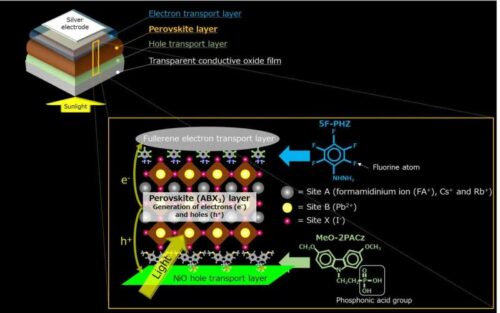Researchers from National Institute for Materials Science (NIMS) have developed durable perovskite solar cell with an area of 1-cm2 that can generate electricity for more than 1,000 hours continuously

Solar panels are useful in generating clean and green electricity as there are no greenhouse gas emissions. Perovskite is the most promising material used for manufacturing reliable solar cells. The only drawback of perovskite solar cells is that they are sensitive to water and degrade when they react with water molecules. This affects their durability and efficiency. Hence, researchers have invented a perovskite cell that could prevent water molecules from coming into contact perovskite layer, improving the durability of the solar cell.
The perovskite layer absorbs sunlight which produces electrons and holes. These electrons and holes flow separately into the adjacent electron transport layer and hole transport layer which results in an electric current. For enhancing the efficiency and durability of perovskite solar cells, these layers and the interfaces between them need to allow electrons and holes to move through them more freely while making the interfaces impermeable to water molecules. This research team included a hydrazine derivative containing water-repellent fluorine atoms (5F-PHZ) to the interface between the electron transport layer and the perovskite layer (composed of a crystalline structure, FA0.84Cs0.12Rb0.04PbI3, which can be expressed simply by ABX3, where A = a combination of formamidinium ions (FA+), Cs+ and Rb+; B = Pb2+; and X = I-).
The above interface successfully obstructed water molecules that have penetrated the electron transport layer from coming into contact with the perovskite layer. Further, this also reduced the number of crystalline defects that formed on the surface of the perovskite layer, a cause of decreased power generation efficiency. The team also included phosphonic acid derivative (MeO-2PACz) in the interface between the hole transport layer and the perovskite layer, which curtailed defect formation in the hole transport layer and upgraded the power generation efficiency of the solar cell.
Click here for the Published Research Paper






